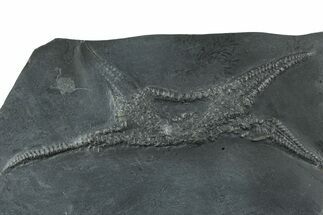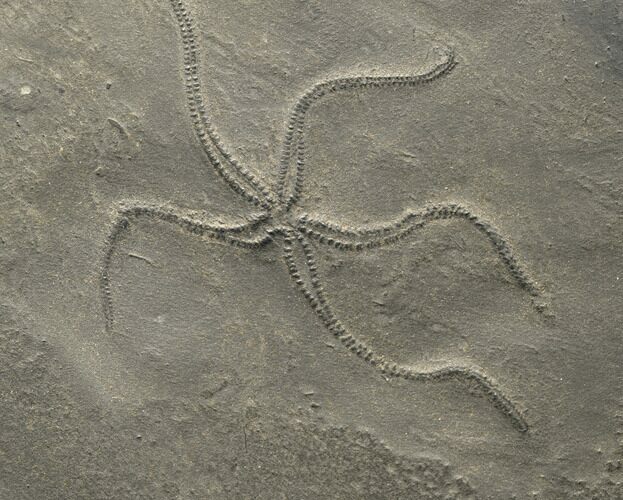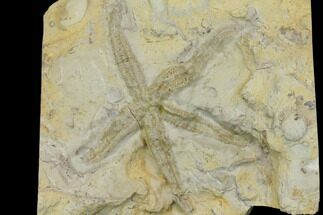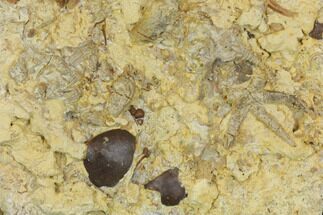This Specimen has been sold.
Beautiful Hunsrück Starfish (Urasterella) - 3.5" Wide
Urasterella is an extinct genus of the class Asteroidea that lived from the Ordovician thru to the Devonian. Fossils are known from Europe, North America and southern Africa.
Although intact starfish fossils are uncommon, there are a few locations where accumulations of complete skeletal structures occurred, like the "starfish beds" of the Hunsruck slate. This specimen measures 9.5cm in length and is roughly centered on an unbroken plate of slate that measures 20cm in length. The Bundenbach quarries have been closed. The only way to acquire a fossil from this famous location is purchase one from an existing collection.
The lower Devonian (lower Emsian) slates from Bundenback have been quarried for roofing material for centuries. Quarrying continued until the 1960s, when the competition from cheaper synthetic or imported slate resulted in production decline. The last pit closed in 2000. Mining of Hunsrück slate was important for the discovery of Paleozoic fossils. Although not rare, fossils can only be found through extensive mining of slate and time consuming preparation. Fossils are hard to see lying under the surface of dark slate. In 1970, Wilhelm Stürmer, a chemical physicist and radiologist developed a new method to examine the Hunsrück slate fossils using medium energy X-rays. The Bundenbach “Hunsruck Slate is famous for yeilding one of the most important assemblages of Paleozoic fossils, featuring 260 animal species, including many arthropods, corals, mollusks, and echinoderms - like this beutifully presented sea star.
Although intact starfish fossils are uncommon, there are a few locations where accumulations of complete skeletal structures occurred, like the "starfish beds" of the Hunsruck slate. This specimen measures 9.5cm in length and is roughly centered on an unbroken plate of slate that measures 20cm in length. The Bundenbach quarries have been closed. The only way to acquire a fossil from this famous location is purchase one from an existing collection.
The lower Devonian (lower Emsian) slates from Bundenback have been quarried for roofing material for centuries. Quarrying continued until the 1960s, when the competition from cheaper synthetic or imported slate resulted in production decline. The last pit closed in 2000. Mining of Hunsrück slate was important for the discovery of Paleozoic fossils. Although not rare, fossils can only be found through extensive mining of slate and time consuming preparation. Fossils are hard to see lying under the surface of dark slate. In 1970, Wilhelm Stürmer, a chemical physicist and radiologist developed a new method to examine the Hunsrück slate fossils using medium energy X-rays. The Bundenbach “Hunsruck Slate is famous for yeilding one of the most important assemblages of Paleozoic fossils, featuring 260 animal species, including many arthropods, corals, mollusks, and echinoderms - like this beutifully presented sea star.
SPECIES
Urasterella asperula
LOCATION
Bundenbach, Germany
FORMATION
Hunsrück Slate
SIZE
3.5" Wide, Matrix 8" Wide
CATEGORY
SUB CATEGORY
ITEM
#14655
We guarantee the authenticity of all of our specimens.
 Reviews
Reviews













